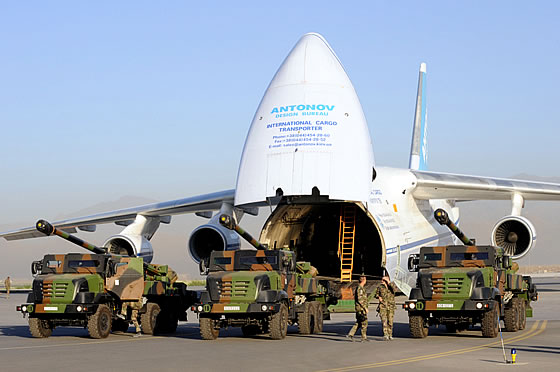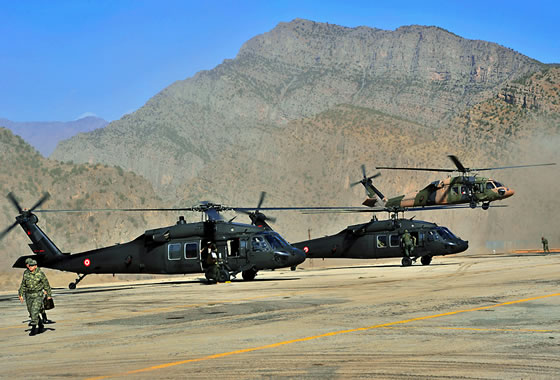Thales et MBDA visent un contrat de 2,5 milliards d'euros environ. L'un est légitime et a le bénéfice de l'antériorité dans la négociation, l'autre propose au groupe d'électronique de faire une offre commune. Sans succès. Problème, cette bataille fratricide, qui agace les Saoudiens, pourrait bénéficier aux Américains si le nouveau gouvernement français n'y met pas bon ordre.
C'est une véritable guerre franco-française que se livrent en coulisse depuis plusieurs mois le missilier MBDA, appuyé par la puissance de feu d'EADS (son actionnaire à hauteur de 37,5%), et le groupe d'électronique Thales, lui même soutenu par Dassault Aviation. Et tous les coups - ou presque - sont permis entre les deux rivaux, qui sont pourtant également de bons partenaires dans plusieurs programmes en coopération. Mais l'enjeu commercial et industriel dépasse aujourd'hui les rapports que les deux groupes peuvent entretenir. Car il s'agit d'un contrat (baptisé Mark 3) de plusieurs milliards d'euros en Arabie saoudite. De sources concordantes, le montant du contrat s'élève actuellement à 2,5 milliards d'euros alors qu'il a culminé à 4 milliards d'euros environ en 2011. Le Royaume souhaite moderniser sa défense anti-aérienne de courte portée, composée jusqu'ici de systèmes de missiles Shahine (Crotale amélioré, monté sur châssis AMX 30) de fabrication Thales, qui est le fournisseur attitré du Royaume depuis près de trente ans de sa défense anti-aérienne (contrat Al Thakeb en 1984). C'est même l'une des priorités de Ryad, glisse un observateur bien informé : "le prince Salmane (alors ministre de la Défense, puis nommé en juin prince héritier et vice-premier ministre, ndlr), l'a dit aux Français" quand le ministre de la Défense, Gérard Longuet, est venu à Ryad fin mars.
Un contrat de 2,5 milliards qui peut être perdu
Dans ce contexte, Thales propose une modernisation du parc saoudien à base de Crotale NG (VT1). Et depuis 1984, Thales fait son beurre en engrangeant toute une série de contrats pour le support et la rénovation des systèmes Crotale/Shahine à l'image du contrat Shola 2 (197 millions d'euros). Mais MBDA veut lui aussi profiter de la manne saoudienne et a proposé auprès de Ryad ses missiles VL Mica et Aster ainsi que la modernisation des Crotale, sous la maîtrise d'oeuvre de Thales. Ce que refuse obstinément l'électronicien, qui lorgne ce contrat depuis 2008. "C'est l'arlésienne, ce contrat", soupire-t-on chez MBDA, qui assure jouer pour l'équipe de France contre des concurrents étrangers.
Une chose est sure, cette bagarre entre deux groupes considérés comme français par l'Arabie saoudite est en train de brouiller le message de la France auprès de Ryad. Et cette guerre fratricide pourrait, à terme, estiment plusieurs sources concordantes, faire perdre le contrat au profit d'un concurrent étranger. Les Américains sont en embuscade et comptent les coups. Et l'histoire pourrait une nouvelle fois se répéter pour Paris qui a pourtant enregistré de nombreux échecs en Arabie saoudite (contrat de surveillance des frontières Miksa, Rafale....) en raison de dysfonctionnements majeurs liés à la guerre des réseaux franco-français. "les Saoudiens ne comprennent pas ce qui se passent, ils sont complètement surpris par cette guerre franco-française qui ne les concerne pas", explique-t-on à "latribune.fr".
Guerre entre les services étatiques
Pourtant, tout semblait clair lors du passage à Ryad de l'ancien ministre de la Défense, Gérard Longuet, qui faisait son dernier voyage en Arabie saoudite le 24 mars dernier avant le début de la campagne électorale pour la présidentielle. La France continuait à soutenir une offre depuis 2008, celle de Thales. Les Saoudiens en avaient pris acte et étaient prêts à signer dans le courant de l'année 2012, assure-t-on à "latribune.fr". D'autant que le Roi avait donné son feu vert en envoyant une lettre d'intention et avait même dégagé un budget. En outre, Gérard Longuet avait fait passer le message à Ryad que l'armée de l'air française n'abandonnerait pas le Crotale NG (Nouvelle génération) pour protéger ses bases aériennes. Ce qui avait alors rassuré les Saoudiens.
Mais très vite, EADS, profitant entre autres de la semi-vacance du pouvoir en France en raison de la campagne, est revenu à la charge auprès des autorités, vantant l'offre alléchante de MBDA. Chez le missilier européen, on explique ainsi que les autorités saoudiennes leur ont demandé de présenter cette offre. Ce qui a toutefois fini par brouiller tout le message de Gérard Longuet. Depuis les discussions sont bloquées. D'autant que, selon les services étatiques français, les Saoudiens ont eu droit à une musique différente.
Ainsi, l'offre de MBDA est appuyée par une partie de la direction générale de l'armement (DGA) tandis que celle de Thales est appuyée par Odas, une société créée par l'Etat français pour soutenir les grands industriels de l'armement, essentiellement en Arabie saoudite. Et les Saoudiens, affirme-t-on à "latribune.fr" ont même eu la visite au printemps du directeur central du renseignement intérieur d'alors, Bernard Squarcini, accompagné d'un haut dirigeant d'EADS, pour leur demander au nom de l'Etat français de recevoir dans le cadre de cette affaire un intermédiaire, qui apparaît aujourd'hui dans des affaires sulfureuses autour du président de la République. Un homme pourtant qui n'est plus en cour à Ryad depuis longtemps. "MBDA et EADS n'auront jamais ce contrat", estime un bon connaisseur de l'Arabie saoudite. Bref du grand guignol à la française si n'est qu'à la clé il y a quand même un contrat de 2,5 milliards d'euros pour un industriel français. "On a aujourd'hui l'impression que tout ce passé est terminé avec la nouvelle majorité qui veut des affaires claires et propres", estime cette même source.
Une bagarre prémice de la consolidation de la filière missilière
A la DGA, on estime que Thales a tellement laissé traîner en longueur ce dossier et qu'il n'est pas anormal que MBDA joue aujourd'hui à fond sa chance : "Les Saoudiens veulent-ils vraiment Thales depuis tout ce temps". En tout cas, MBDA fait le job et plutôt bien avec l'appui d'EADS, et notamment du délégué général d'EADS surplace, Jacques Bourgeois... un ancien de Thales parti fâché du groupe et qui est proche de l'ambassade française à Ryad. Au sein du groupe d'électronique, on rappelle qu'il y avait pourtant un accord de non agression exigé en 2008 par le secrétaire général de l'Elysée, Claude Guéant, sur l'Arabie saoudite entre les deux groupes. Certes, mais Thales n'a pas très bien joué le coup avec Ryad. Car son PDG, Luc Vigneron, qui n'a pas eu toujours de bonnes relations avec certains hauts dirigeants saoudiens, a récemment débarqué son directeur de la Région Moyen-Orient, Olivier Badard, qu'il avait pourtant nommé en février 2009, sans en avertir les Saoudiens, furieux de n'avoir été ni prévenus, ni consultés.
Mais au-delà de cette affaire très juteuse, il y a également un autre volet qui se joue sur le plan industriel avec la poursuite de la consolidation de la filière missilière européenne. L'activité de systèmes de missiles de Thales a besoin de ce contrat pour faire tourner son usine de Belfast. Car MBDA guette le bon moment pour faire main basse sur les activités missiles de Thales à bon prix. A condition que le groupe électronique soit vendeur. Ce qui n'est pas le cas aujourd'hui, explique-t-on au sein du Thales. Aujourd'hui seulement : le contrat saoudien, s'il est perdu, pourrait à nouveau déterminer son choix dans la revue de son portefeuille d'activités. "Nous avons à portée de mains une formidable opportunité en Arabie saoudite pour relancer cette activité", confirme-t-on chez Thales, qui pourra ainsi préparer grâce aux marges confortables du contrat la prochaine génération de missiles de défense aérienne. Thales joue gros et MBDA qui le sait bien, peut se permettre de jouer à qui perd gagne - soit le contrat, soit la consolidation avec Thales. Tout en ayant le beau rôle : "Nous voulons sauver ce contrat pour la France"...


















